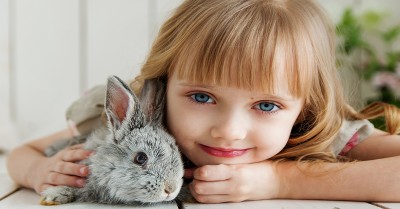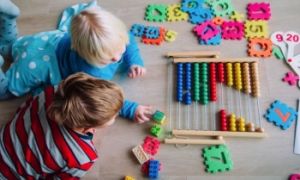When children observe, interact and care for an animal it can provide an enriching experience and be a valuable part in learning about empathy, relationships and nature. It also teaches children about responsibility and nurture. Although there are many benefits services must also balance the potential health hazards associated with the presence of an animal.
Choosing The Right Animal For Your Centre
Before purchasing an animal for your centre, you need to take into the considerations of the families, children and other Educators within your service. Parents should be given an opportunity to provide feedback about the decision and provide you with information of any allergies, fears or phobias their child may have.
There are a lot of questions to consider when choosing the right pet including:
- Who will pay for the care and upkeep of the animal, including feeding, health care and cleaning?
- How will the animal be cared for on weekends and during service closure periods?
- What physical space is available in the service? Is it adequate for the animal you are thinking of?
- Are all educators and families happy with the decision to keep an animal at the service?
- What time will be available throughout the day to care for the animal or will educators be asked to give up some personal time for this?
- Are there any children or educators at your service who are allergic to, or have phobias of, animals?
- What changes to your service’s policies and procedures need to be considered? For example, your handwashing policy will need to be updated to include washing hands after having contact with the animal.
- What are the health and safety risks?
Assessing and Managing Risks
While providing children with access to animals and keeping pets in your service, there are issues that you need to consider for the safety and wellbeing for children and animals at the service. A risk/benefit analysis should be conducted when deciding the type of animal and how children will engage with it.
Disease
Access to animals in an education and care service requires special consideration to prevent the spread of infectious diseases because contact with animals can spread disease.
- Health authorities identify that germs can be present on the skin, hair, feathers and scales, and in the faeces, urine and saliva of animals. While these germs may not cause disease in the animal, they may cause disease in humans.
- Effective handwashing and cleaning
- Children and adults should employ effective hand washing after touching or feeding animals, or cleaning their bedding, tanks, cages or enclosures. Cleaning of bedding, tanks, cages or enclosures can be part of the learning experience.
Appropriate Supervision
Children should also be appropriately supervised when they have contact with animals to avoid potential injury or harm to the child or the animal.
There are a number of issues you need to consider, including:
- Preventing children from ingesting or touching faeces (droppings) or dirt that contains animal faeces or fleas
- Potential allergies. Many children are allergic to animals and may have symptoms when they are around them. Care also needs to be taken with children who have food allergies as some pet foods contain common allergens such as nuts and seafood
- Dog and cat bites are the most reported types of injuries caused by pets. The tearing and puncture wounds they produce can cause serious infections
- Parasites that may be transferred by pets, such as ringworm (which is a fungus), worms, fleas and ticks.
Preventative Measures
Simple preventative measures below will minimise risks to health from supervised contact with animals:
- Children should be discouraged from playing with animals while eating
- Children should not put their faces close to animals
- Make sure that children wash and dry their hands after touching animals
- Ensure that animals are treated, wormed and immunised as recommended by a vet
- Clean fish tanks regularly
- Animals that are ill should be treated promptly by a vet
- Avoid animals risk to contaminate sandpits, pot plants and vegetable gardens
- Always wear gloves when handling animal faeces, emptying litter trays and cleaning cages
- Dispose of animal faeces and litter daily and more often if necessary. Place faeces and litter in a plastic bag and put it out with the garbage
- Pregnant women, in particular, should avoid contact with cat faeces
- Children should not assist in cleaning of bird cages, fish tanks or other animal cages or pens
Standards and Regulations
Your service should consider other standards relating to children’s access to animals including:
• animal welfare and ethics policies, legislation and standards
• local, state or territory government licensing requirements (for example, for the keeping of reptiles or freshwater turtles, or limits on the number of chickens)
• policies and regulations that apply to services delivered through the government school system.
Policies and Procedures
Policies and procedures should be developed in collaboration with all stakeholders and should be developed to realistically support the co-existence of pets and children.
To determine policy guidelines which best promote children’s health and safety, a service may consider issues such as:
- any federal, state or territory legislative requirements, including public health, animal welfare and health and safety
- developing practices to support a safe environment and minimise risk
- the welfare of animals in a service
- any known potential allergies or illnesses that children may suffer as a result of coming into contact with animals
- the families and children’s comfort levels
- the ages of the children and their skills and abilities
- maintaining hygiene where children and animals share the same space
- risk assessment processes
- acknowledging the value of children’s learning to care for animals safely and humanely.
During Assessment and Rating
Authorised officers may look for and discuss a range of different practices which demonstrate that educators value children’s agency. They might also look for how this is reinforced through the service’s policies and the educational program.
Assessors may observe:
- Educators modelling appropriate behaviour and supporting children during interactions with animals
- Children being adequately supervised
- Educators modelling appropriate hygiene and safety practices.
Assessors may discuss:
- How children are supported to interact with the animals
- How families were consulted
- How the ages, skill levels and preferences of individual children are considered and respected.
Assessors may sight:
- Philosophy and policy are relevant to the context of the service such as how is the animal fed, how space is cleaned, what provisions are in place for the animal when the service is closed.
- Documentation gathered from consultation with families
- Risk/benefit assessment documents
- Documentation to manage potential allergies or medical conditions.
Encouraging direct contact and developing bonds with animals, can help children build empathy. Providing children with access to animals in an education and care service can help them learn about the life cycle and relationships, and improve communication.
References:
Keeping Pets and Animas IN Educational and Care Services, ACECQA, February 2018
Pets in Childcare Policy, Lilis Early Learning
Animals In ECEC Settings, Care For Kids



 As an Educator in Australia, your pay rate falls under the Children’s Services Award 2010. This award states the minimum amount that an employer can
As an Educator in Australia, your pay rate falls under the Children’s Services Award 2010. This award states the minimum amount that an employer can When working as a qualified Early Childhood Teacher (with a university degree) within a service, your rate of pay will come from the Educational Services
When working as a qualified Early Childhood Teacher (with a university degree) within a service, your rate of pay will come from the Educational Services When working as a Diploma Qualified Educator your pay rate is from the Children's Services Award 2010. This Award states your minimum rate of pay
When working as a Diploma Qualified Educator your pay rate is from the Children's Services Award 2010. This Award states your minimum rate of pay When working as a Cert 3 Qualified Educator, your pay rate is from the Children's Services Award 2010. This Award states your minimum rate of
When working as a Cert 3 Qualified Educator, your pay rate is from the Children's Services Award 2010. This Award states your minimum rate of Educational Leaders play a crucial role in their early childhood service by ensuring that the educational program aligns with best practices and supports the holistic
Educational Leaders play a crucial role in their early childhood service by ensuring that the educational program aligns with best practices and supports the holistic In early childhood education and care, ratios are more than a technicality—they are a frontline safeguard. Every child deserves responsive supervision, emotional connection, and developmental
In early childhood education and care, ratios are more than a technicality—they are a frontline safeguard. Every child deserves responsive supervision, emotional connection, and developmental With the new national child safety reforms kicking in on 1 September 2025, early childhood services like yours have a real opportunity to lead the
With the new national child safety reforms kicking in on 1 September 2025, early childhood services like yours have a real opportunity to lead the Here’s a comprehensive Mobile Phone and Smart Watch Policy tailored for early childhood education and care (ECEC) services in Australia, aligned with the latest 2025
Here’s a comprehensive Mobile Phone and Smart Watch Policy tailored for early childhood education and care (ECEC) services in Australia, aligned with the latest 2025 The Sea of Fish Challenge is a national initiative that invites children, educators, families, and communities to create and display fish artworks as a symbol
The Sea of Fish Challenge is a national initiative that invites children, educators, families, and communities to create and display fish artworks as a symbol Across the early childhood education and care sector, educators are sounding the alarm: current staffing ratios are insufficient to deliver safe, meaningful, and developmentally appropriate
Across the early childhood education and care sector, educators are sounding the alarm: current staffing ratios are insufficient to deliver safe, meaningful, and developmentally appropriate


